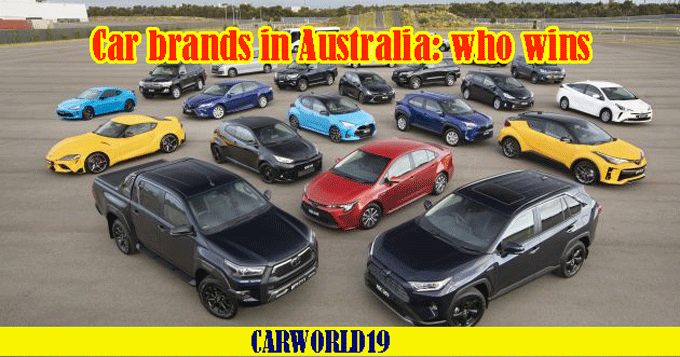Australians are known for being car brands enthusiasts, with Australia having one of the highest vehicle per capita rates in the world.
According to the ABS, there are currently over 19 and a half million registered automobiles on Australian roads.
 |
| Car brands in Australia: who wins? |
That works out to about 0.8 automobiles per person, which is a stunning number when you consider newborns, children, and anyone else who doesn't drive at all. If these folks were taken out of the equation, the result would be considerably closer to 1/1.
However, that figure may be on the decline.
Number of automobiles sold
Tony Weber, CEO of the Federal Chamber of Automotive Industries (FCAI), said that economic conditions in Australia and throughout the world had impacted automobile sales. Nonetheless, Australians are great vehicle fans, so without further ado, here are the most popular automobiles in Australia, broken down by brand and model.
Top 10 car brands in 2022
The top ten best-selling automobile brands in May 2022 are as follows:
This list of Australia's top ten vehicle brands isn't all that shocking. Seven of the brands featured below are in the top ten worldwide vehicle brands, with Toyota once again taking the top spot.
In 2020, the most popular models are
In addition, FCAI breaks out which automobile models sell the most in every given month. The top ten car models in any given month are typically quite stable, with Toyota accounting for five of the top ten (and three of the top five).
This information is noteworthy since the top-selling car, the Toyota Hilux, is a Ute, as are the second-best-selling Ford Ranger and the fourth-best-selling Mitsubishi Triton. The fact that Utes make up so many of the top ten best-selling cars implies that Aussies are eager to embrace their down-to-earth, true-blue characteristics. Perhaps it's simply because Utes are strong, practical, and widely utilized by tradesmen and companies (as fleet cars), which would account for a significant chunk of these new purchases. It's either/or.
What is it about these brands that makes them so popular?
Because these lists include such a wide range of vehicles, it's tough to pinpoint why they're so popular. While brand awareness certainly plays a role in buying decisions, there are a few basic characteristics that can be seen in each of the models on this list:
- High fuel efficiency and minimal carbon emissions.
- Affordability - several of these cars may be purchased for less than $30,000 on the road.
- Low operating costs were a decision factor for several of the smaller types.
- Interior comfort and aesthetics are also important.
Notably, each of the top 10 automobile models has received a five-star ANCAP safety rating, indicating that they are equipped with the maximum level of safety features available in current vehicles, such as parking assist, blind-spot mirrors, lane departure alerts, and more. This is already pretty normal among new automobiles, although it does indicate that today's car customer is likely more safety-conscious.
How do Australians go about purchasing automobiles?
According to a collaborative survey conducted by Ipsos and Carsales.com.au, automobile shopping in Australia is more diverse than ever before. Gone are the days when you could walk into a dealership, talk to a greasy car salesperson, and drive away in a car that was out of your price range. Car review and comparison sites now affect 61 percent of new and used car purchasers, compared to only 38 percent who are influenced by dealerships.
The ordinary Australian is just more educated these days, visiting a dealership an average of four times before making a purchase. They utilize mobile phones, tablets, and laptops to acquire crucial information about their preferred vehicle during the period between excursions, and are ready to go up to 80 kilometers to find it.
Because brand loyalty is waning, the automobiles at the top of this list must be doing something well. But don't take our word for it; you have a lot of knowledge at your disposal, so put it to good use!
 |
| Car brands in Australia: who wins? |
Two cents from carworld19.com
Overall, ABS inflation data shows that automobiles are becoming more inexpensive. For example, in the year 2000, a new $16,000 automobile would have cost you $20,000. That's a 20 percent price difference. Your automobile also doesn't have to be brand new; 30% of car buyers consider a used car, which may be much less expensive.
While automobiles are costly to purchase, they may be considerably more costly to maintain. After you've paid for the item, you might wind up spending over $10,000 every year. So don't only stare at a car's outside. Investigate:
- The efficiency of the fuel.
- Insurance premiums.
- The registration fee is.
- Costs of depreciation that may be incurred.
It's likely that there are automobiles outside the top ten that are significantly less expensive in the long run. Consider a secured car loan with low interest rates and fees if you decide to take out a car loan to buy your next vehicle. Use a vehicle loan repayment calculator to get a sense of what to expect and avoid going into debt.

.png)
